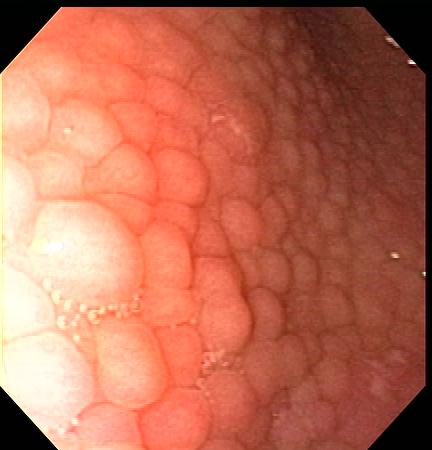Bacteriology: Gram-negative microaerophilic bacterium
Pathogenesis: H. pylori produces urease, an enzyme that converts urea into ammonia and carbon dioxide, which in turn increases gastric pH and allows for further colonization of the bacteria.
Epidemiology: Up to 90% are infected in developing countries.
Diagnosis: Blood (serum antibodies – used only in naive, untreated patients), endoscopy (biopsy, rapid urease test), stool (detects antigen in feces – used to check infection clearance after treatment), breath (urea breath test).
Signs&symptoms: Majority (80%) are asymptomatic. When symptomatic, patients have bloating, dyspepsia, abdominal pain, nausea, vomiting, upper GI bleed (from gastric/duodenal ulcer).
Disease: Gastritis, peptic Ulcer, gastric cancer (H pylori classified by WHO as class I carcinogen)
Endoscopy: Gastric ulcer, nodular/erythematous gastritis

Tratament: Triple/quadruple therapy, sequential therapy. First line is amoxicillin 1g po bid + clarithromycin 500mg po bid + esomeprazole 40 mg po once a day (or 20 mg po bid – morning and evening) for 7-14 days.
